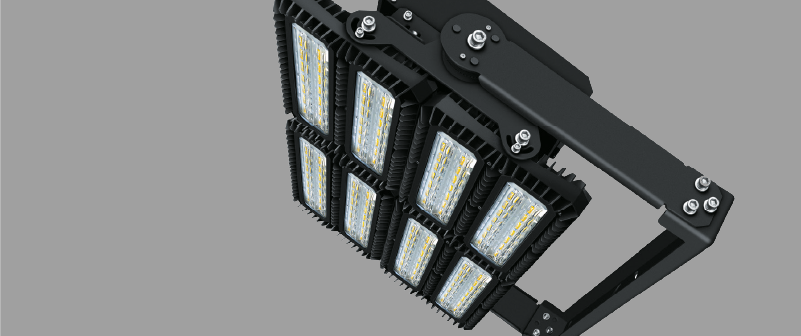Contact
Floodlight pole conical with crossbar
The conical round lighting pole consists of a formed and longitudinally welded sheet steel, which is hot-dip galvanised with a minimum steel quality of S235 JR and according to DIN EN ISO 1461.
The pole is statically designed individually for the installation site and adapted to the floodlight luminaires used in each case. The poles have a door cut-out with an inserted steel door and triangular lock made of V2A, edge length 12mm.
A cable junction box can be accommodated by means of an equipment bar and sliding nuts inside the pole. Two openings for cable entry are opposite each other in the ground piece.
The light poles and crossbars for outdoor installations are designed for wind zone 2,
the lighting masts for ski slopes for wind zone 3.
If necessary, the transformers can be mounted in the pole
Further mounting options are directly on the luminaire or in a separate connection cabinet with separate cable routing.

Maintenance flap
Flap for wiring / opening on both sides for cable routing


Crossbars
For mounting and aligning LED floodlights


Mounting variants transformer
Integrated variant

Integrated transformer box for mounting directly on the luminaire. Waterproof connections are required.
External variant

Separate transformer box for external mounting. Waterproof connections are required.
Product range
| 114735 | For 1 floodlight, galvanised steel, height above ground 8 m |
| 114733 | For 2 floodlights, galvanised steel, height above ground 12 m |
| 114734 | For 2 floodlights, galvanised steel, height above ground 15 m |
| 114732 | For 3+2 floodlights, galvanised steel, height above ground 15 m |
| 114736 | For 4+2 floodlights, galvanised steel, height above ground 15 m |
To the products
FREE CONSULTATION
We advise you on the selection, assembly and positioning of masts and floodlights!
Request now
Wind zones using the example of Germany

Example of proposed foundation for tennis court and soccer field

Please note that the foundation recommendations of Europoles are based on calculations with standard loads and are therefore without guarantee. Assumption: Normally grown soil without water buoyancy







